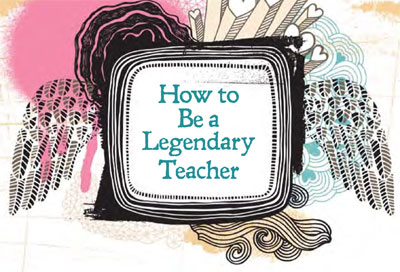Can you imagine teaching middle grades students for more than four decades?
As a middle school principal, I had the opportunity to work with just such a teacher. Barry Krizan taught three generations of our community’s young adolescents and has reached “legend” status. This is how Barry did it.
Respect and Relationships
- Create a climate that empowers students to take ownership of their classroom. Teach respect for property and people.
- Make a connection. The better you know your students, the better you will understand the circumstances surrounding their behavior. You’ll be less likely to jeopardize your relationships with them.
- Know your students beyond the classroom. Attend student activities outside the school day to build positive relationships with students and parents.
- Express the expectation that every student will be successful academically, emotionally, and socially. Consider tending to the emotional needs of students as a project, not a problem.
- Help students develop self-confidence and a positive outlook on life. Catch students being good and give them ample praise. Help a shy student become more outgoing. Express your pleasure in having a perpetually happy student in class. Your response to a wrong answer might be “I never thought about it that way, but let’s take another look.”
- Model strong ethics and morals at all times.
Instruction
- Keep students excited about learning. Laugh at yourself and think like a middle school student. Add nonsensical, humorous answers as options on multiple-choice quizzes or tests.
- Encourage students to become lifelong learners. If you travel to an interesting place, bring back artifacts to share.
- Build on young adolescents’ need to interact with peers by including group and partner work.
- Give students a choice in learning activities, such as reports, letters to a friend, journals, drawings, interviews, comic strips, songs, poems, and plays.
- Because young adolescents are competitive, provide low-risk, non-threatening contests that facilitate and reinforce learning. Make it clear that the objective is learning
Student Management
- Recognize that eye contact and head or hand gestures serve as subtle reminders that the teacher is in charge.
- Be creative and realize that what may work with one student may not work with another.
- Be responsive, not reactive when dealing with discipline.
- Be authoritative and firm without raising your voice. Exhaust every alternative before removing a student from the class.
Be a Legend
Relationships are the foundation of effective teaching. Treat everyone equally and place others’ interests and needs ahead of your own. Make everyone you encounter a better person.
That’s what legends are made of.
Previously published in Middle Ground magazine, August 2012
